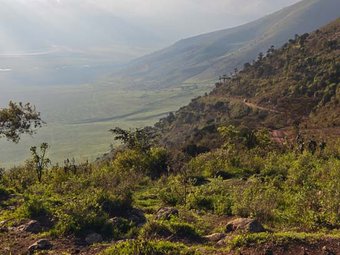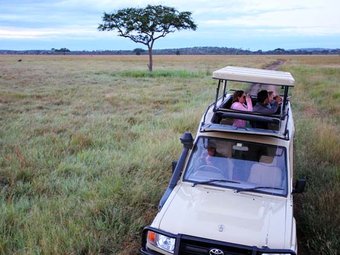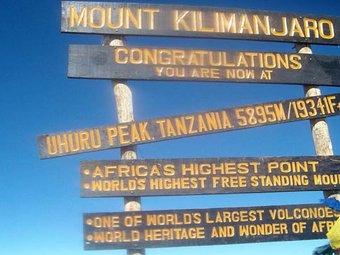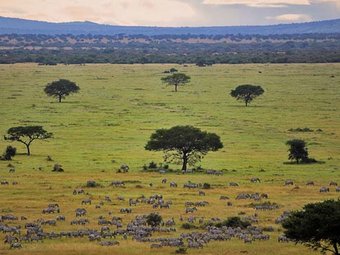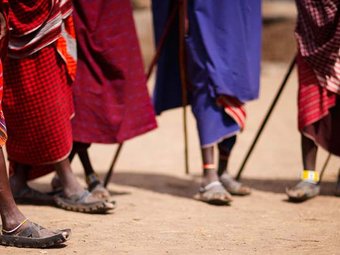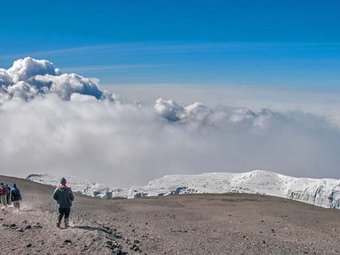Big Five Safaris
3 days—Ngorongoro Crater, Lake Manyara & Tarangire
$900-1500 USD
pp
Safari summary
Ngorongoro Conservation Area
Ngorongoro Conservation Area
The Ngorongoro Crater is one of Africa’s most famous sites and is said to have the highest density of wildlife in Africa. Sometimes described as an ‘eighth wonder of the world’, the Crater has achieved world renown, attracting an ever-increasing number of visitors each year. You are unlikely to escape other vehicles here, but you are guaranteed great wildlife viewing in a genuinely mind-blowing environment. There is nowhere else in Africa quite like Ngorongoro!
The Ngorongoro Crater is the world’s largest intact volcanic caldera. Forming a spectacular bowl of about 265 square kilometres, with sides up to 600 metres deep; it is home to approximately 30,000 animals at any one time. The Crater rim is over 2,200 metres high and experiences its own climate. From this high vantage point it is possible to make out the tiny shapes of animals making their way around the crater floor far below. Swathes of cloud hang around the rocky rim most days of the year and it’s one of the few places in Tanzania where it can get chilly at night.
The crater floor consists of a number of different habitats that include grassland, swamps, forests and Lake Makat (Maasai for ‘salt’) – a central soda lake filled by the Munge River. All these various environments attract wildlife to drink, wallow, graze, hide or climb. Although animals are free to move in and out of this contained environment, the rich volcanic soil, lush forests and spring source lakes on the crater floor (combined with fairly steep crater sides) tend to incline both grazers and predators to remain throughout the year.
Ngorongoro Crater: Wildlife Highlights
Ngorongoro Crater is one of the most likely areas in Tanzania to see the endangered Black Rhino, as a small population is thriving in this idyllic and protected environment. It is currently one of the few areas where they continue to breed in the wild. Your chances of encountering leopard here are also good, and fabulous black-maned lions. Many flamingos are also attracted to the soda waters of Lake Magadi.
Ngorongoro Crater: Maasai village trips
Part of the reason behind the Ngorongoro Conservation Area has been to preserve the environment for the Maasai people who were diverted from the Serengeti Plains. Essentially nomadic people, they build temporary villages in circular homesteads called bomas. There are possibilities to visit a couple of these now, which have been opened up for tourists to explore. Here you can see how the huts are built in a strict pattern of order according to the chronological order of the wives, and experience what it must be like to rely on warmth and energy from a fire burning at the heart of a cattle dung dwelling with no chimney. These proud cattle herding people have a great history as warriors, and even though they are no longer allowed to build villages inside, they continue to herd their cattle into the crater to graze and drink, regardless of the predators nearby.
About this tour
| Tour type | Custom, tailor-made, private | |
| Main focus | Game drives | |
| Activity level | Easy activity | |
| Best months | All months | |
| Countries | ||
| Parks |
Fine details
Safari highlights
- Night game drives
Itinerary
Day 1
Arusha | Lake Manyara | Tarangire
Day 1: Moshi-Arusha-Tarangire Stop At: Lake Manyara, Lake Manyara National Park, Arusha Region Moshi/Arusha – Lake Manyara Non game-viewing travel time: 2 ½ hours Distance: 130 km Meet our professional tours guide/driver in Arusha town, who will deliver a short safari info briefing, after which, we travel to the Lake Manyara National Park. We arrive in time for lunch at the lodge. After lunch we head into the Lake Manyara National Park. This impressive park is one of Tanzania’s most dramatically located wildlife areas, consisting of a massive but shallow soda lake (covering two-thirds of the park) at the foot of the Great Rift Valley’s western escarpment. The park’s varied habitat attracts a wide variety of animals, including one of Africa’s largest concentrations of elephants, Manyara’s famous tree-climbing lions, as well as large flocks of flamingos attracted by the algae in the lake. Dinner and overnight as per the standard and type of accommodation option requested. Duration: 14 hours Meals included: • Lunch • Breakfast • Dinner Accommodation included: Camping Budget
Day 2
Arusha | Lake Manyara | Ngorongoro Crater
Day 2: Lake Manyara-Ngorongoro Crater Stop At: Ngorongoro Crater, Ngorongoro Conservation Area, Arusha Region
Day 2
Lake Manyara | Ngorongoro Crater | Tarangire
Day 2 : Lake Manyara National Park – Ngorongoro Crater Non game-viewing travel time: 2 hours & 3 ½ hours Distance: 60km & 155 km After breakfast we descend 600m into this magnificent crater for a morning, half-day game drive. The Ngorongoro Crater is one of the most densely crowded African wildlife areas in the world and is home to an estimated 30,000 animals including some of Tanzania’s last remaining black rhino. Supported by a year round water supply and fodder, the Ngorongoro Crater supports a vast variety of animals, which include herds of wildebeest, zebra, buffalo, eland, warthog, hippo, and giant African elephants. Another big draw card to this picturesque national park is it’s dense population of predators, which include lions, hyenas, jackals, cheetahs and the ever-elusive leopard, which sometimes requires a trained eye to spot. We will enjoy a picnic lunch in the crater, after which we travel to the Tarangire National Park. Dinner and overnight Camping Duration: 8 hours Meals included: • Breakfast • Lunch • Dinner Accommodation included: Camping Budget
Day 3
Arusha | Tarangire
Day 3: Tarangire National Park-Moshi/Arusha Stop At: Tarangire National Park, Tarangire National Park, Arusha Region Tarangire National Park – Arusha Non game-viewing travel time: 2 hours Distance: 120 km After breakfast do we head into the Tarangire National Park for a morning game drive. The park runs along the line of the Tarangire River and is mainly made up of low-lying hills on the Great Rift Valley floor. Its natural vegetation mainly consists of Acacia woodland and giant African Baobab trees, with huge swamp areas in the south. Both the river and the swamps act like a magnet for wild animals, during Tanzania’s dry season. The Tarangire National Park is reputed to contain some of the largest elephant herds in Africa. This African national park is also home to three rare species of animals – the Greater Kudu, the Fringed-eared Oryx, as well as a few Ashy Starlings. We return to the lodge for lunch after which we will depart for Arusha town and we will end our African safari adventure. The group should tip the tour guide around $20 a day for all our safaris. You will be taken to your hotel, which ends our safari packages services. Duration: 14 hours Meals included: • Breakfast • Lunch • Dinner Accommodation included: Hotel
Here are the latest tours by Dodo Group.
Migration Safaris Serengeti
Tour by: Dodo Group
Countries:

Focus: Game drives
Big Five Adventure
Tour by: Dodo Group
Countries:

Focus: Game drives
Rongai Route
Tour by: Dodo Group
Countries:

Focus: Hiking | trekking
Kilimanjaro Lemosho route
Tour by: Dodo Group
Countries:

Focus: Hiking | trekking
Kilimanjaro
Tour by: Dodo Group
Countries:

Focus: Hiking | trekking
Kilimanjaro
Tour by: Dodo Group
Countries:

Focus: Hiking | trekking
Cleanliness of vehicle
Meet and greet team
Quality of itinerary
Responsiveness of staff
